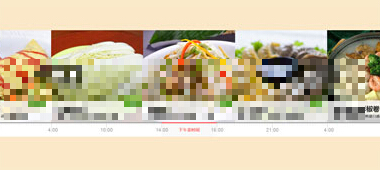本文實例講述了php實現圖片添加描邊字和馬賽克的方法。分享給大家供大家參考。具體實現方法如下:
馬賽克:void imagemask ( resource image, int x1, int y1, int x2, int y2, int deep)
imagemask() 把坐標 x1,y1 到 x2,y2(圖像左上角為 0, 0)的矩形區域加上馬賽克。
deep為模糊程度,數字越大越模糊。
描邊:void imagetextouter ( resource image, int size, int x, int y, string color, string fontfile, string text, string outercolor)
imagetextouter() 將字符串 text 畫到 image 所代表的圖像上,從坐標 x,y(左上角為 0, 0)開始,顏色為 color,邊框所使用的顏色為 outercolor,使用 fontfile 所指定的 truetype 字體文件。
如果不指定字體文件,則使用gd的內部字體。根據 php 所使用的 gd 庫的不同,如果 fontfile 沒有以 ‘/'開頭,則 ‘.ttf' 將被加到文件名之後並且會搜索庫定義字體路徑。
如果指定了字體文件,由 x,y 所表示的坐標定義了第一個字符的基本點(大概是字符的左下角)。否則 x,y 定義了第一個字符的右上角。
fontfile 是想要使用的 truetype 字體的文件名。
text 是文本字符串,可以包含 utf-8 字符序列(形式為:{)來訪問字體中超過前 255 個的字符。
color 是十六進制的#rrggbb格式的顏色,如#ff0000為紅色。
outercolor 描邊顏色,十六進制的#rrggbb格式。
復制代碼 代碼如下:<?php
/**
* gd image mask
*
* @copyright ugia.cn
*/
function imagemask(&$im, $x1, $y1, $x2, $y2, $deep)
{
for($x = $x1; $x < $x2; $x += $deep)
{
for ($y = $y1; $y < $y2; $y += $deep)
{
$color = imagecolorat ($im, $x + round($deep / 2), $y + round($deep / 2));
imagefilledrectangle ($im, $x, $y, $x + $deep, $y + $deep, $color);
}
}
}
//馬賽克用法示例:
header("content-type: image/png");
$im = imagecreatefromjpeg("test.jpg");
imagemask($im, 57, 22, 103, 40, 8);
imagepng($im);
imagedestroy($im);
?>
運行效果如下圖所示:

復制代碼 代碼如下:<?php
/**
* gd image text outer
*
* @copyright ugia.cn
*/
function imagetextouter(&$im, $size, $x, $y, $color, $fontfile, $text, $outer)
{
if (!function_exists('imagecolorallocatehex'))
{
function imagecolorallocatehex($im, $s)
{
if($s{0} == "#") $s = substr($s,1);
$bg_dec = hexdec($s);
return imagecolorallocate($im,
($bg_dec & 0xff0000) >> 16,
($bg_dec & 0x00ff00) >> 8,
($bg_dec & 0x0000ff)
);
}
}
$ttf = false;
if (is_file($fontfile))
{
$ttf = true;
$area = imagettfbbox($size, $angle, $fontfile, $text);
$width = $area[2] - $area[0] + 2;
$height = $area[1] - $area[5] + 2;
}
else
{
$width = strlen($text) * 10;
$height = 16;
}
$im_tmp = imagecreate($width, $height);
$white = imagecolorallocate($im_tmp, 255, 255, 255);
$black = imagecolorallocate($im_tmp, 0, 0, 0);
$color = imagecolorallocatehex($im, $color);
$outer = imagecolorallocatehex($im, $outer);
if ($ttf)
{
imagettftext($im_tmp, $size, 0, 0, $height - 2, $black, $fontfile, $text);
imagettftext($im, $size, 0, $x, $y, $color, $fontfile, $text);
$y = $y - $height + 2;
}
else
{
imagestring($im_tmp, $size, 0, 0, $text, $black);
imagestring($im, $size, $x, $y, $text, $color);
}
for ($i = 0; $i < $width; $i ++)
{
for ($j = 0; $j < $height; $j ++)
{
$c = imagecolorat($im_tmp, $i, $j);
if ($c !== $white)
{
imagecolorat ($im_tmp, $i, $j - 1) != $white || imagesetpixel($im, $x + $i, $y + $j - 1, $outer);
imagecolorat ($im_tmp, $i, $j + 1) != $white || imagesetpixel($im, $x + $i, $y + $j + 1, $outer);
imagecolorat ($im_tmp, $i - 1, $j) != $white || imagesetpixel($im, $x + $i - 1, $y + $j, $outer);
imagecolorat ($im_tmp, $i + 1, $j) != $white || imagesetpixel($im, $x + $i + 1, $y + $j, $outer);
// 取消注釋,與fireworks的發光效果相同
/*
imagecolorat ($im_tmp, $i - 1, $j - 1) != $white || imagesetpixel($im, $x + $i - 1, $y + $j - 1, $outer);
imagecolorat ($im_tmp, $i + 1, $j - 1) != $white || imagesetpixel($im, $x + $i + 1, $y + $j - 1, $outer);
imagecolorat ($im_tmp, $i - 1, $j + 1) != $white || imagesetpixel($im, $x + $i - 1, $y + $j + 1, $outer);
imagecolorat ($im_tmp, $i + 1, $j + 1) != $white || imagesetpixel($im, $x + $i + 1, $y + $j + 1, $outer);
*/
}
}
}
imagedestroy($im_tmp);
}
//用法示例:
header("content-type: image/png");
$im = imagecreatefromjpeg("bluesky.jpg");
$white = imagecolorallocate($im, 255,255,255);
imagetextouter($im, 9, 10, 20, '#000000', "simsun.ttc", '新年快樂', '#ffffff');
imagetextouter($im, 2, 10, 30, '#ffff00', "", 'hello, world!' , '#103993');
imagepng($im);
imagedestroy($im);
?>
希望本文所述對大家的PHP程序設計有所幫助。